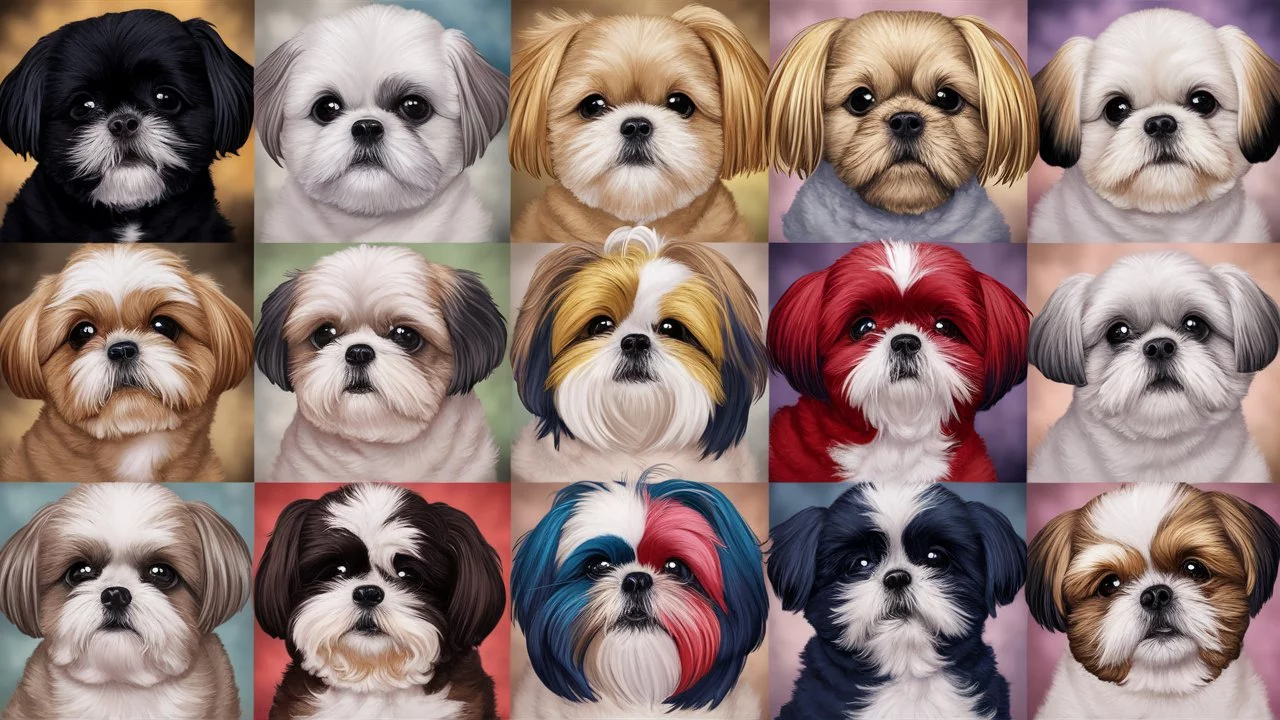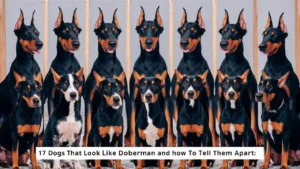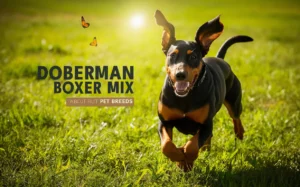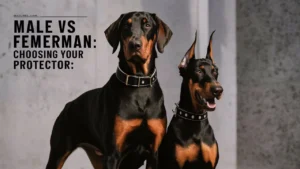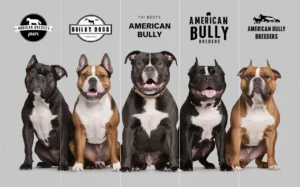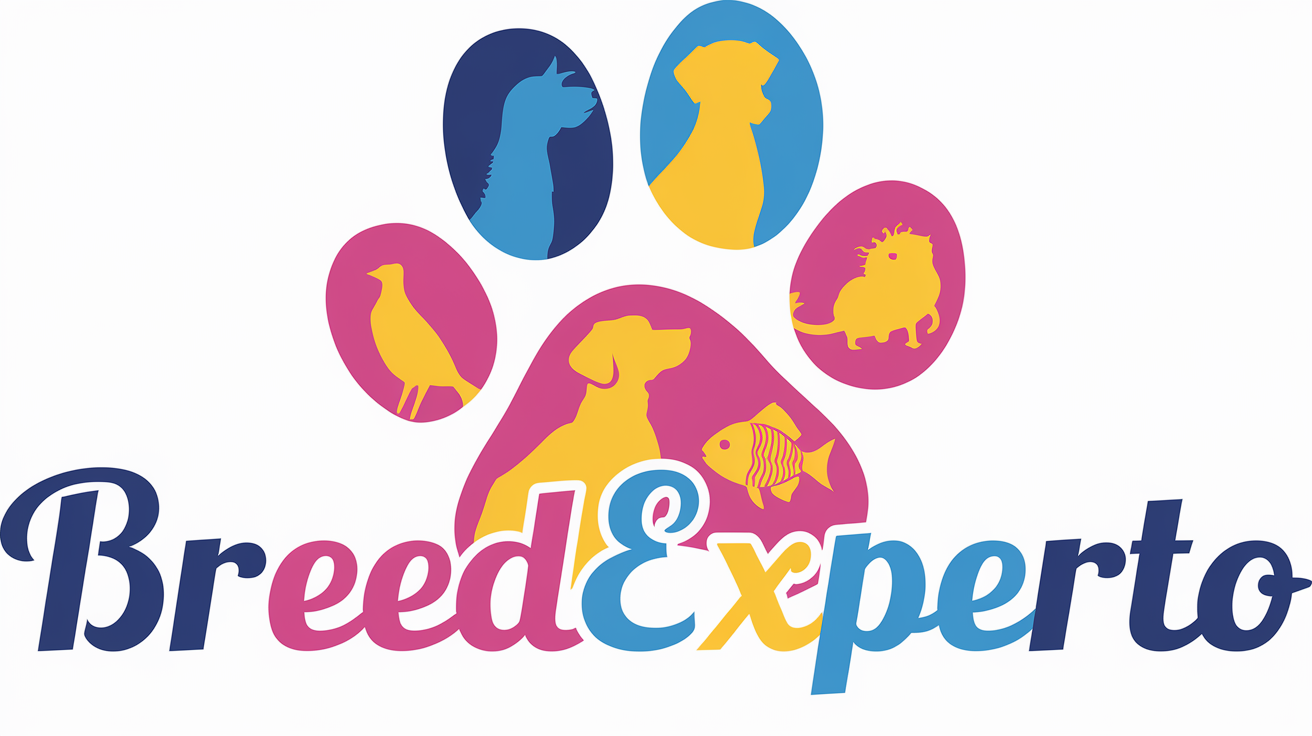Shih Tzus are one of the most beloved toy dog breeds worldwide.
Known for their cute, lion-like appearance and friendly nature, they come in a wide variety of coat colors and patterns that can leave any dog lover in awe.
Whether you’re a current owner, a potential adopter, or simply an admirer, this guide explores 20 stunning Shih Tzu colors that will truly leave you breathless.
In this blog post, we’ll break down each color variation, offering deep insights into their unique beauty, genetics, and how these colors can change over time.
Black Shih Tzus
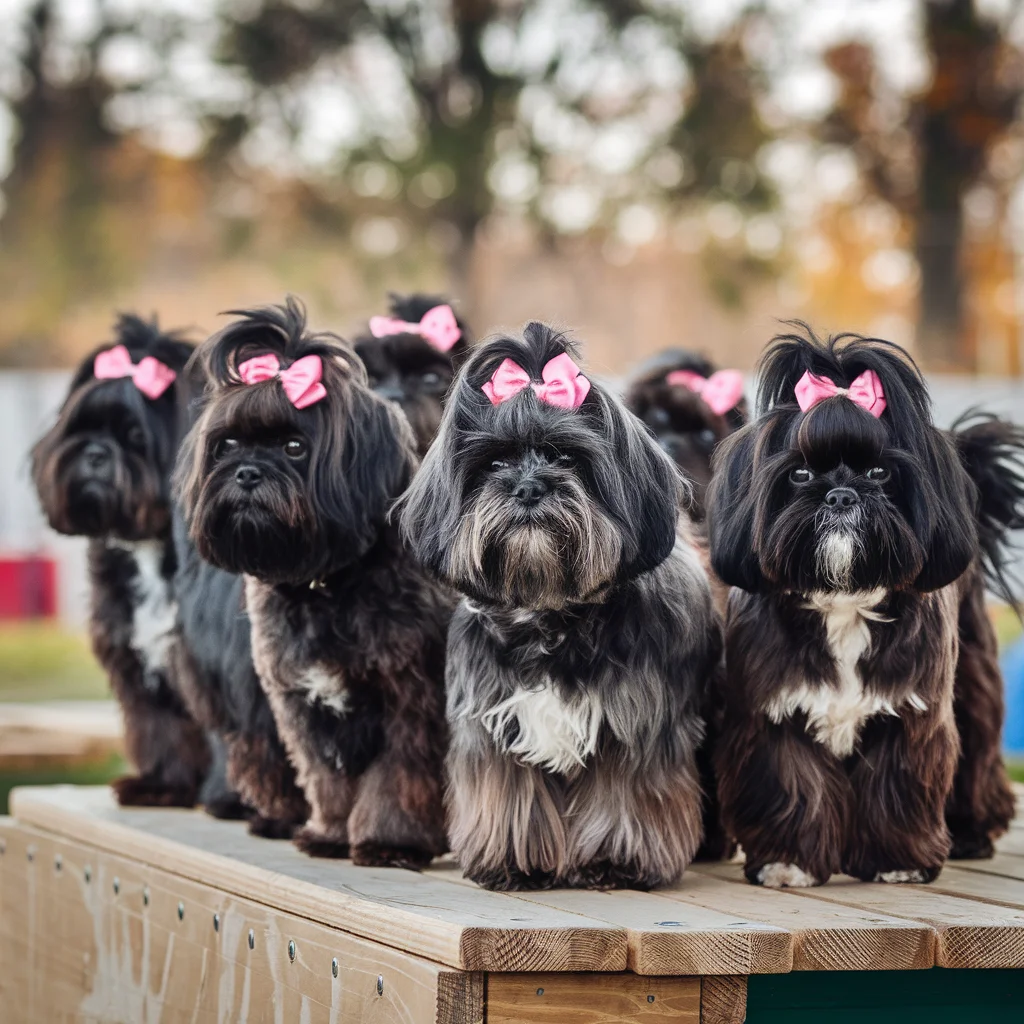
A solid black Shih Tzu is a rare and striking beauty. While black is one of the more common base colors in many dog breeds, a fully black Shih Tzu without any other markings is actually quite uncommon.
- Coat description: The deep, glossy black coat often appears sleek and shiny under different lighting conditions.
- Rarity: Full black Shih Tzus are rarer than their mixed-color counterparts.
- Genetics: Black coats are typically produced when a Shih Tzu inherits two dominant black genes. If one gene is recessive, other color markings may appear.
Owners often remark on how the jet-black fur gives their Shih Tzus a regal and elegant appearance. Due to their uniqueness, black Shih Tzus often stand out in a crowd.
Black and White Shih Tzus
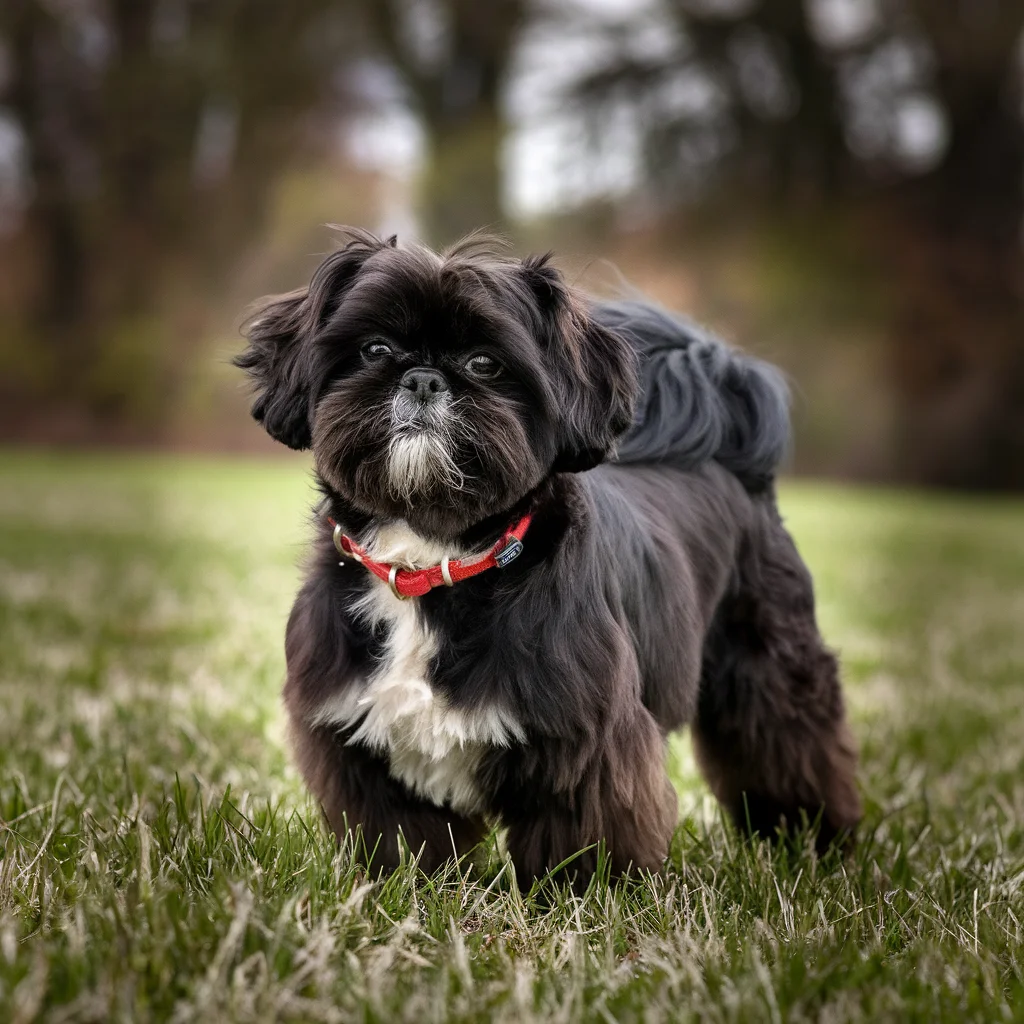
This popular combination of black and white Shih Tzus is a classic and is widely loved by dog enthusiasts.
It showcases a beautiful contrast of dark and light that can vary from small white patches to large markings.
- Patterns: The white markings can appear as tuxedo patterns, piebald (large, irregular spots), or as a blaze on the face.
- Variability: No two black and white Shih Tzus have the same pattern, making each one unique.
In many cases, the black and white combination grows more pronounced as the Shih Tzu matures. Some pups may start with mostly black coats and develop more white patches as they age.
Brindle Shih Tzus
Brindle is one of the more fascinating coat patterns found in Shih Tzus. The brindle Shih Tzu coat features a mix of two or more colors in a striped, tiger-like pattern.
- Color composition: Brindle can include a base coat color such as gold, brown, or black, with lighter or darker stripes on top.
- Unique appearance: The brindle pattern can sometimes give the dog a marbled or streaked look, which changes with movement and lighting.
- Genetic factors: Brindle is often a result of the dog carrying specific genes that influence the striping.
The brindle coat is always eye-catching and can look dramatically different in puppies and adults.
Brindle and White Shih Tzus
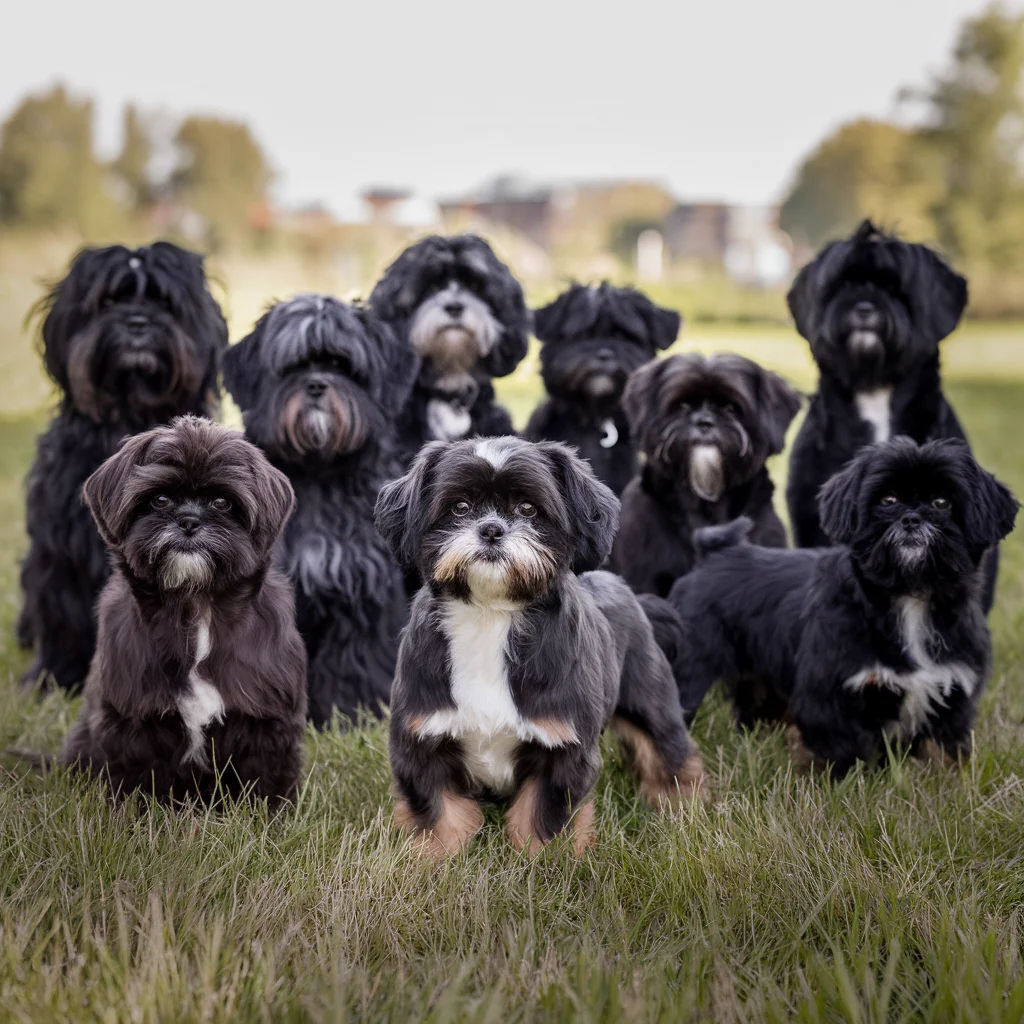
In brindle and white Shih Tzus, the brindle pattern combines with white patches, creating a distinct and appealing contrast.
The white markings can appear anywhere, from the paws to the chest or face.
- Distribution of white: Often, brindle Shih Tzus have white fur on their chests, paws, and sometimes a white blaze running down their nose.
- Brindle diversity: Since brindle is a pattern rather than a solid color, the shades and stripe intensity can vary greatly from one dog to another.
Gold Shih Tzus
Gold Shih Tzus are often regarded for their luxurious, warm-colored coats that can range from a light honey shade to deep, rich amber.
This color gives them a royal and elegant appearance, making them quite sought after.
- Color variations: Gold can vary from light, cream-like tones to more saturated, golden brown shades.
- Changing hues: It’s not uncommon for gold Shih Tzu puppies to darken or lighten as they grow older.
This color is often compared to sunlight, and many Shih Tzu owners appreciate the rich, warm glow of their gold-coated pets.
Gold and White Shih Tzus
The gold and white Shih Tzu combines the regal gold coat with crisp white markings.
This is another highly popular variation, thanks to the contrast of the two colors.
- Pattern examples: White patches can often be found on the chest, legs, or face, giving a soft balance to the rich gold hues.
- Common patterns: Many gold and white Shih Tzus have symmetrical white markings on their faces, which enhances their expressive features.
The combination of gold and white is one of the most popular in the breed due to its elegant, yet striking look.
Red Shih Tzus
Red Shih Tzus boast a bold and striking coat that is quite different from the softer gold tones.
This rich red color adds a unique vibrancy to their appearance.
- Color description: The red coat can range from deep mahogany to lighter rust shades, often with a glossy sheen.
- Genetics: Red is typically a recessive gene, making it slightly less common than other color variations.
Red Shih Tzus are an eye-catching variation and often have strong pigmentation in their noses and paw pads, which complements their rich coat.
Red and White Shih Tzus
In the case of red and white Shih Tzus, the bold red coat is contrasted by pure white markings.
This combination is vibrant and lively, creating a visual balance between the warm tones of red and the coolness of white.
- Pattern possibilities: Red Shih Tzus with white markings often have blazes, white socks, or white chests.
- Common traits: The combination of red and white is particularly charming on puppies, whose red coats may deepen with age.
This mix of colors brings out the playful and friendly nature of Shih Tzus.
Silver Shih Tzus
One of the most elegant colors in Shih Tzus is silver. A silver Shih Tzu has a coat that can range from a light, silvery-gray to a deep gunmetal hue.
- Coat transformation: Many silver Shih Tzus start as black puppies, with the silver tones developing over time as they grow.
- Color intensity: Some silver coats can appear almost metallic, giving the dog a unique and eye-catching look.
Silver Shih Tzus are known for their sophisticated appearance, often resembling miniature aristocrats with their sleek, shiny coats.
Silver and White Shih Tzus
A silver and white Shih Tzu takes the stunning silver base coat and contrasts it with soft white patches.
This combination is delicate yet sophisticated, often creating a very balanced and pleasing appearance.
- Patterns: Common patterns include silver bodies with white feet, chests, or facial markings.
- Coat care: Silver coats often require regular grooming to maintain their shine, especially when combined with white.
This color variation is perfect for those who prefer subtle elegance in their pet’s appearance.
Blue Shih Tzus
A blue Shih Tzu is a rare and intriguing variation, characterized by its diluted black color, which gives off a bluish hue.
- Color characteristics: The blue color can range from slate gray to steel blue, depending on the lighting.
- Genetic rarity: Blue Shih Tzus are produced when a dog inherits a dilute gene, making it less common than other colors.
Blue Shih Tzus are prized for their unusual and striking coats, often appearing softer and cooler than standard black Shih Tzus.
Blue and White Shih Tzus
The blue and white Shih Tzu combines the rare blue coat with white accents. This color combination offers a softer contrast than black and white, giving the dog a unique and appealing look.
- Patterns: Common patterns include white paws, chests, or facial markings.
- Rarity: Due to the genetic rarity of blue coats, blue and white Shih Tzus are highly sought after.
The cool, elegant tones of blue and white Shih Tzus make them a popular choice among breeders and enthusiasts alike.
Liver Shih Tzus
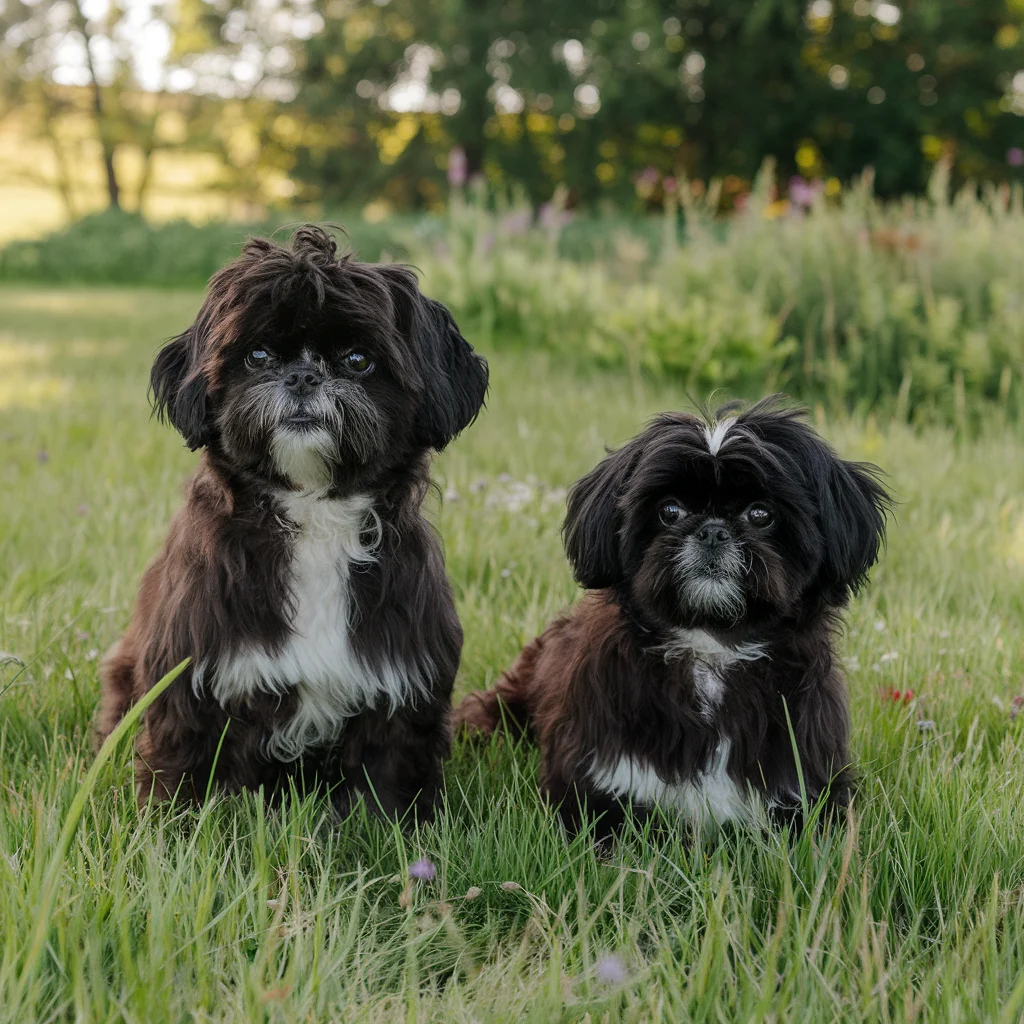
Liver Shih Tzus are defined not just by the color of their fur but also by the pigmentation of their skin, nose, and eyes.
The liver color is a deep brown, often resembling chocolate.
- Pigmentation: A true liver Shih Tzu will have liver (brown) pigmentation in their nose, lips, and paw pads.
- Fur variations: Liver coats can vary from light to dark shades of brown, depending on the genetics of the dog.
Liver Shih Tzus are often considered unique because their brown pigmentation gives them a soft, warm appearance.
Liver and White Shih Tzus
The liver and white Shih Tzu is a beautiful combination of a brown (liver) base coat with white patches. This color pattern offers an earthy, warm look.
- Patterns: Like other two-tone Shih Tzus, liver and white coats come in various patterns, from piebald to tuxedo.
- Unique appeal: The combination of liver-colored fur and white markings often highlights the Shih Tzu’s adorable facial features.
The mix of warm brown and crisp white makes liver and white Shih Tzus an eye-catching choice.
White Shih Tzus
A white Shih Tzu is rare and highly prized for its pure, angelic appearance. Unlike other color combinations, a fully white Shih Tzu is quite uncommon.
- Coat care: White coats require regular grooming to stay clean and prevent staining.
- Rarity: White Shih Tzus are rare because the recessive genes responsible for the color are less frequently passed on.
A white Shih Tzu often resembles a little cloud, with its bright and fluffy appearance.
Black, Gold, and Silver Shih Tzus (Tri-Color)
The tri-color Shih Tzu is a striking combination of black, gold, and silver. This mix of colors creates a multi-dimensional look that can appear different from every angle.
- Pattern variation: Tri-color Shih Tzus may have black as the dominant color, with gold and silver accents on their chest or face.
- Genetic complexity: Tri-color Shih Tzus inherit a mix of genes responsible for all three shades.
This combination of dark and light tones gives tri-color Shih Tzus a uniquely sophisticated appearance.
Black, White, and Silver Shih Tzus
A variation of the tri-color pattern, the black, white, and silver Shih Tzu is another stunning combination of hues.
- Appearance: The black fur provides depth, while the white and silver add light and dimension to the overall look.
- Common patterns: These Shih Tzus may have white blazes, silver eyebrows, or white socks, creating a balanced, elegant appearance.
Silver, Gold, and White Shih Tzus
For a more subdued tri-color look, the silver, gold, and white Shih Tzu offers a soft, regal appearance.
- Subtle elegance: The blend of silver, gold, and white creates a muted yet luxurious look, making these Shih Tzus appear more refined.
- Patterning: These colors can appear in various combinations, often creating a soft transition between shades.
This color mix is perfect for those looking for a more understated, elegant Shih Tzu.
Black, Gold, and White Shih Tzus
The black, gold, and white Shih Tzu combines dark, rich black with the warm tones of gold and the brightness of white.
- Bold contrast: Black, gold, and white make a bold, visually appealing mix of colors.
- Patterns: These Shih Tzus often have black as the base color, with white and gold accents on their face or paws.
Lavender Shih Tzus
Perhaps the rarest of all Shih Tzu colors, the lavender Shih Tzu boasts a soft, diluted chocolate color that has a unique, purplish hue.
- Color description: Lavender Shih Tzus have coats that appear to have a light, dusty purple tint in certain lighting.
- Genetic rarity: Lavender is a rare recessive gene, which makes this color highly sought after by breeders.
Lavender Shih Tzus are sure to turn heads with their distinctive and eye-catching coat.
Do Shih Tzus Change Color?
Yes, Shih Tzus can change color as they grow. Many Shih Tzus start with darker coats as puppies, which may lighten or develop new shades as they age.
For instance, black puppies may turn silver, or red Shih Tzus may deepen in color. This change is due to a mix of genetics and environmental factors.
- Genetic factors: Genes like the “fading gene” can influence how much a Shih Tzu’s color changes as it matures.
- Common changes: Many Shih Tzus will experience some lightening or darkening of their coats within the first year of life.
Conclusion
Shih Tzus come in an astonishing array of colors, each one adding to their undeniable charm and personality.
These 20 Shih Tzu colors not only highlight the breed’s diversity but also showcase the beauty of nature’s genetic artistry.
